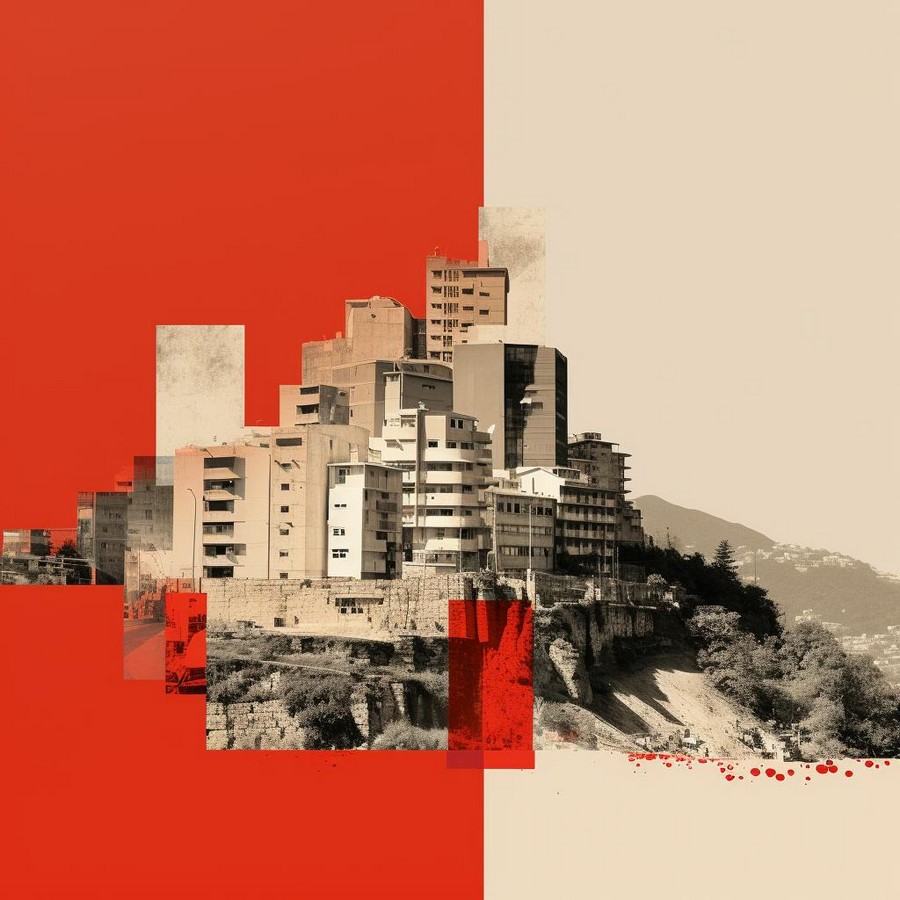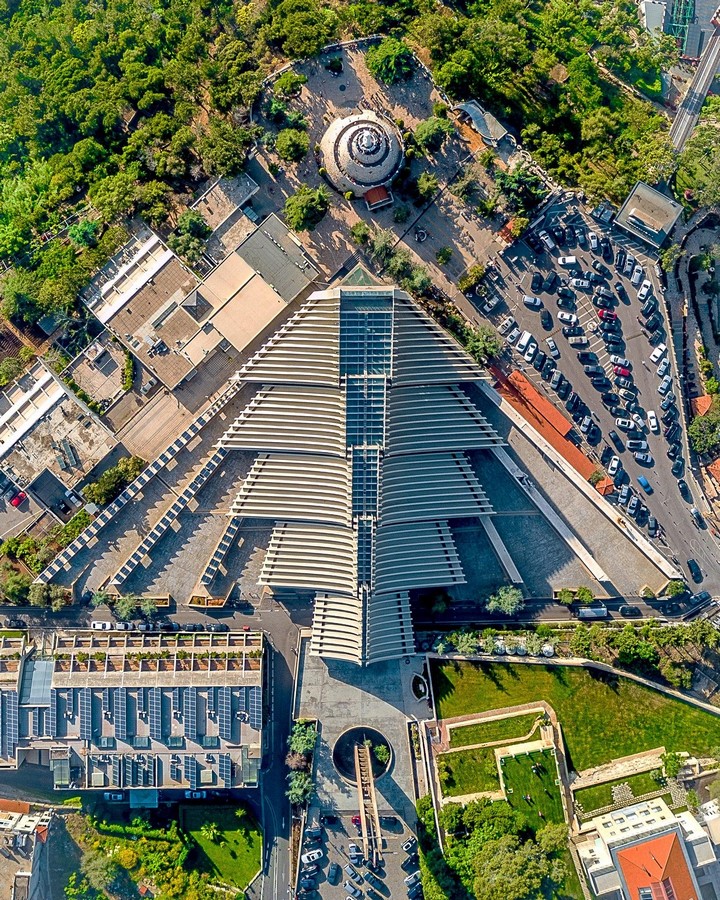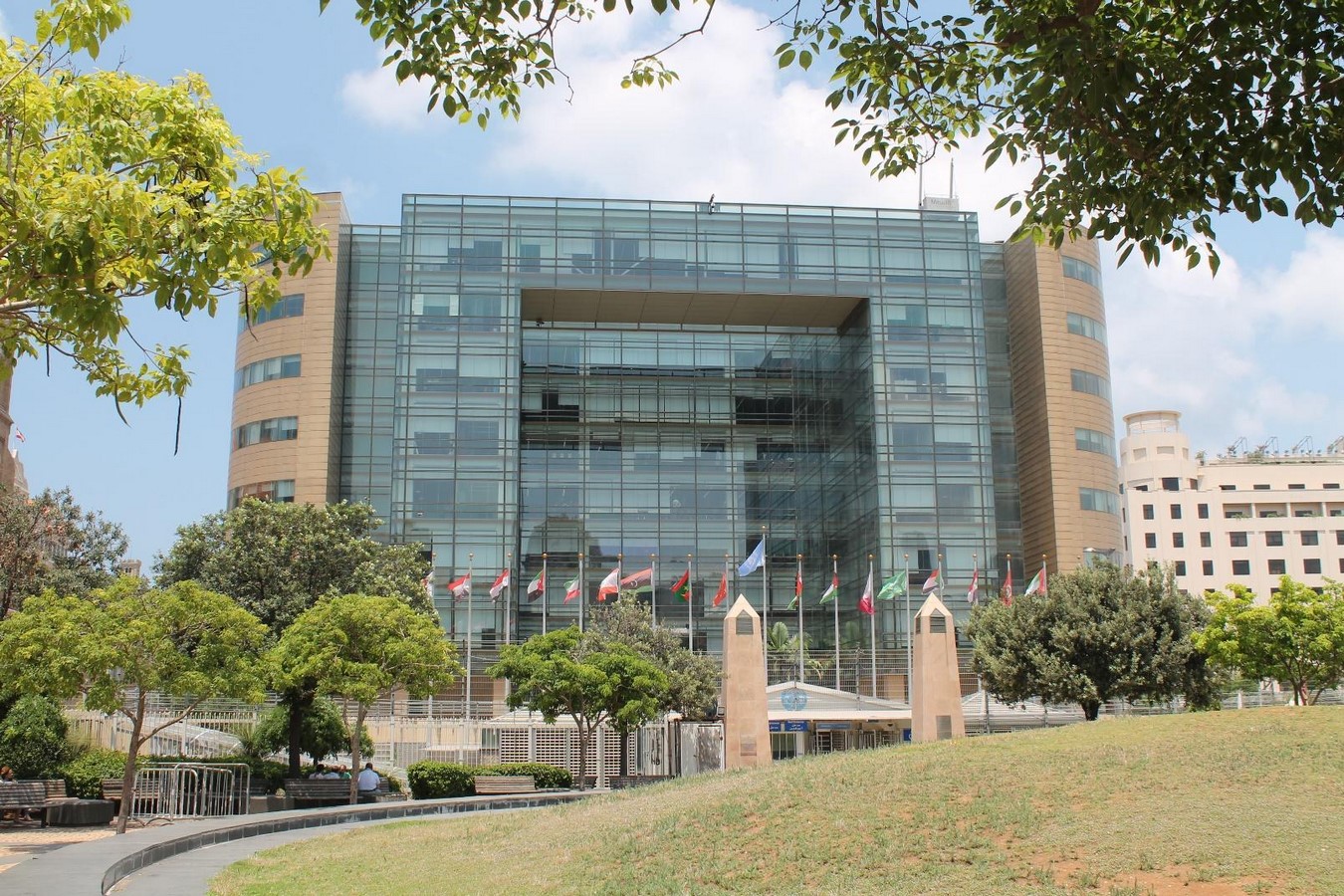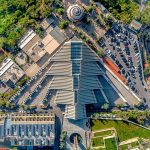One of the most prolific Lebanese architects of the twentieth century, Pierre El Khoury set the architectural foundation for much of Lebanon today. Born in Beirut in 1930, Pierre El Khoury’s architectural legacy is one that lasted decades. His proposals are ones that left a notable architectural and urban imprint on the city of Beirut, trickling into everyday Lebanese life. He endured the full spectrum of political turmoil that Lebanon had experienced- notably, its lengthy, fifteen-year civil war that lasted from 1975 to 1990, changing the fabric.
In analyzing the works of El Khoury, as well as Modern Architecture in Lebanon in general, it is important to keep a deep consideration of The Lebanese Civil War, its consequences, and its influence on the realm of art, architecture, and culture in Lebanon; generally, many people fled and were displaced due to the nature of the brutality. During this restless time, El Khoury stayed in his home country, refusing to leave. Generally speaking, El Khoury’s works are extremely eclectic in architecture, typology, and nature- prisons and pavilions, offices and assembly halls, churches and villas. El Khoury essentially aimed to rebuild and restore a country destroyed by civil war, and thus, built in large quantities: he is credited with building over 200 structures, and, as previously mentioned, covering a wide range of typologies. Further attempting to restore Lebanon’s ruined urban fabric, El Khoury pushed forth by taking on the role of Minister of Public Works, Transport, and Agriculture from 1982-1984.

El Khoury began practicing in Pre-War Lebanon, a time of relative peace and prosperity. Many of his most iconic structures, such as the renowned Basilica of Our Lady of Lebanon in Harissa, were commissioned during this heavily romanticized Golden Age of Pre-War Lebanon. Designed in the 60s, the church is exceptionally monumental in size and style. It is built in a converging directionality towards an iconic statue of the Virgin Mary overlooking Lebanon’s Jounieh Bay. Thus, the proposal is essentially responding to both the existing religious statute, as well as the surrounding natural context. The architecture is exceptionally impressive, with stacked concrete shells re-emphasizing the aforementioned directionality. The structural and organic manipulations of the building’s concrete are ones parallel the daringness of The Sydney Opera House in Australia. The shape of the basilica is an architectural crossing between a “Lebanese cedar and an ancient Phoenician ship”, in a reference to Lebanese cultural motifs- but its heroism in size, scale, proportionality, and, structural innovation is particularly iconic.

The Civil War in Lebanon, however, unfortunately halted many design and architecture projects. Despite this El Khoury continued practicing after the civil war ended and its different factions had dissipated, contributing, and creating more projects for Lebanon. It must be considered that each of the buildings he creates are not merely works of architecture- they are also social statements; examples include the aforementioned Basilica of Our Lady, which aimed to reinforce post-war Christian identity.
Another renowned project by El Khoury includes The Sabbagh Centre, in collaboration with Alvar Aalto and Alfred Roth, helping highlight and return Beirut’s former glory as a financial capital during the Lebanese Golden Age. The L-shaped building is a multipurpose complex, serving as both a building as well as an inviting urban space that is open to the public- a unique, socially inclusive, and considerate proposal.
Another renowned building includes the United Nations Economic and Social Commission for Western Asia (ESCWA) Headquarters. Completed in 1997, the nine-story development is a landmark development at the Southern gateway to Beirut’s city center, overlooking Riad El Solh Square and Gibran Khalil Gibran’s monumental garden. Shaped in the form of an arch, the building boasts an impressive internally landscaped atrium, a pleasantly shaded area with trees, flowers, and benches: “Extensive use of glass in the external walls gives the building a glittering appearance and allows natural light throughout. It is an ’intelligent building’ equipped with state-of-the-art technology”. Architecture, for El Khoury, was both a way to rebuild Lebanon’s urban fabric and reclaim Lebanese national identity after a destructive and tumultuous fifteen-year period of civil decay.

El Khoury’s work set the foundation for both Lebanon’s urban fabric and the future generation of Lebanon’s contemporary architects. His contribution to Lebanon- although not as well appreciated as his Western counterparts- scattered about numerous cities, and shaped Lebanon, and its architecture. El Khoury’s title should also not be reduced to a civil-war architect- albeit that is an achievement on its own; El Khoury’s works stretch out from the late 50s, and, also, represent Lebanon’s Golden Age of the 60s. The diversity and fluidity of his work- in terms of periods, styles, and building types- are what makes him one of Lebanon’s most prolific architects. Although El Khoury passed away in 2005, he contributed to both the building and the rebuilding of a modern Lebanon.
References:
Aramouny, C. (2016) The basilica of our lady of Lebanon, AUB ScholarWorks Home. Available at: https://scholarworks.aub.edu.lb/handle/10938/21510 (Accessed: 16 October 2023).
Sellies, F. (2023) The Basilique de Notre Dame du Liban, Harissa, Lebanon, Flickr. Available at: https://www.flickr.com/photos/26849514@N06/37240938502 (Accessed: 16 October 2023).
Habre, O. (2017) A skyline seeped in history, Executive Life. Available at:
https://life.executive-magazine.com/life/design/architecture/a-skyline-seeped-in-history (Accessed: 16 October 2023).
Elhub (2015) ELHUB, Tumblr. Available at: https://elhub.tumblr.com/post/112684465539/sabbagh-centre-by-alvar-aalto-and-alfred-roth?is_related_post=1 (Accessed: 16 October 2023).
The UN house – ESCWA | solidere. Available at: https://www.solidere.com/city-center/solidere-developments/real-estate/un-house-escwa (Accessed: 16 October 2023).













